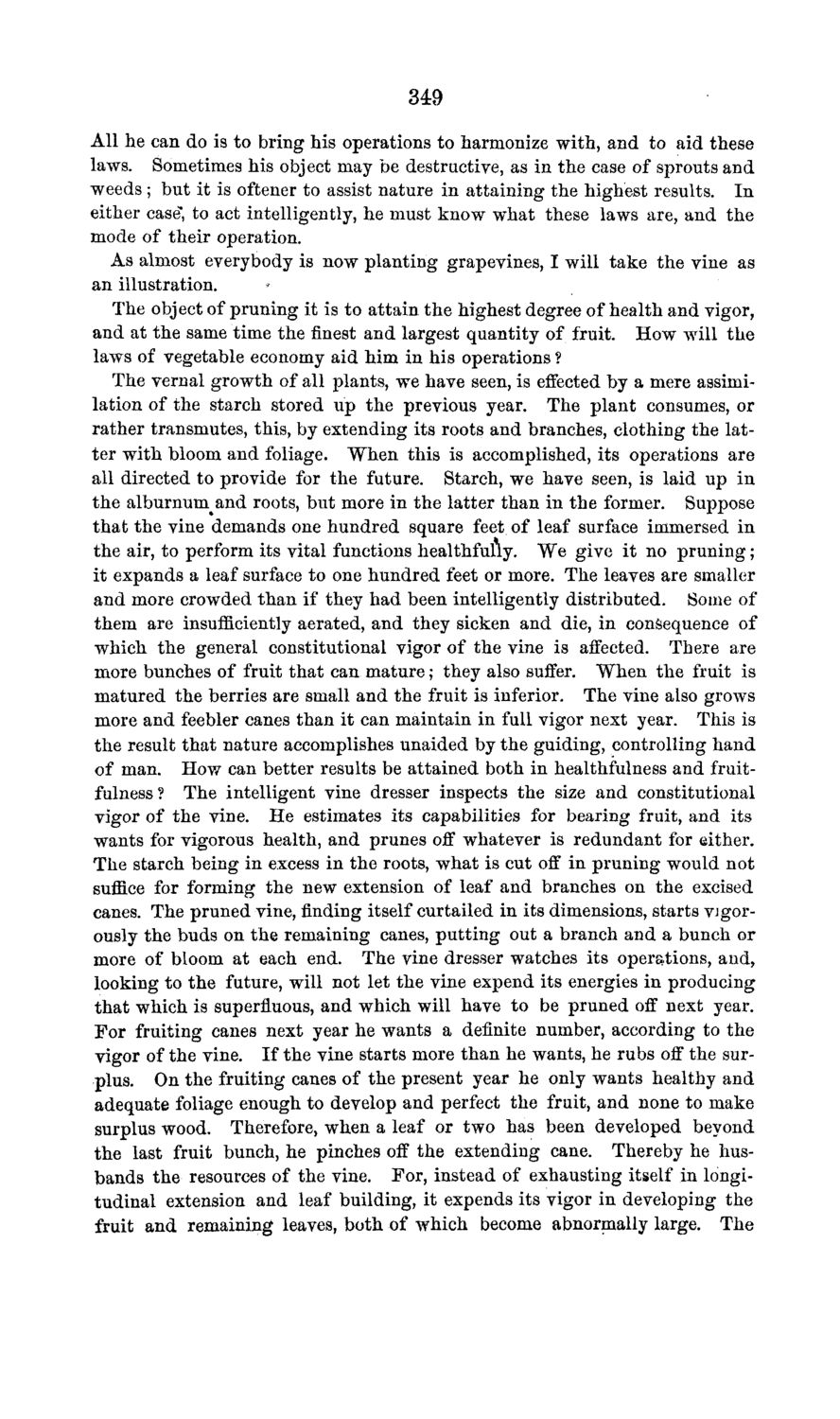| |
| |
Caption: Board of Trustees Minutes - 1869
This is a reduced-resolution page image for fast online browsing.

EXTRACTED TEXT FROM PAGE:
349 All he can do is to bring his operations to harmonize with, and to aid these laws. Sometimes his object may be destructive, as in the case of sprouts and weeds ; but it is oftener to assist nature in attaining the highest results. In either case", to act intelligently, he must know what these laws are, and the mode of their operation. As almost everybody is now planting grapevines, I will take the vine as an illustration. The object of pruning it is to attain the highest degree of health and vigor, and at the same time the finest and largest quantity of fruit. How will the laws of vegetable economy aid him in his operations ? The vernal growth of all plants, we have seen, is effected by a mere assimilation of the starch stored up the previous year. The plant consumes, or rather transmutes, this, by extending its roots and branches, clothing the latter with bloom and foliage. When this is accomplished, its operations are all directed to provide for the future. Starch, we have seen, is laid up in the alburnum^ and roots, but more in the latter than in the former. Suppose that the vine demands one hundred square feet of leaf surface immersed in the air, to perform its vital functions healthfuflv. We give it no pruning; it expands a leaf surface to one hundred feet or more. The leaves are smaller and more crowded than if they had been intelligently distributed. Some of them are insufficiently aerated, and they sicken and die, in consequence of which the general constitutional vigor of the vine is affected. There are more bunches of fruit that can mature; they also suffer. When the fruit is matured the berries are small and the fruit is inferior. The vine also grows more and feebler canes than it can maintain in full vigor next year. This is the result that nature accomplishes unaided by the guiding, controlling hand of man. How can better results be attained both in healthfulness and fruitfulness? The intelligent vine dresser inspects the size and constitutional vigor of the vine. He estimates its capabilities for bearing fruit, and its wants for vigorous health, and prunes off whatever is redundant for either. The starch being in excess in the roots, what is cut off in pruning would not suffice for forming the new extension of leaf and branches on the excised canes. The pruned vine, finding itself curtailed in its dimensions, starts vigorously the buds on the remaining canes, putting out a branch and a bunch or more of bloom at each end. The vine dresser watches its operations, and, looking to the future, will not let the vine expend its energies in producing that which is superfluous, and which will have to be pruned off next year. For fruiting canes next year he wants a definite number, according to the vigor of the vine. If the vine starts more than he wants, he rubs off the surplus. On the fruiting canes of the present year he only wants healthy and adequate foliage enough to develop and perfect the fruit, and none to make surplus wood. Therefore, when a leaf or two has been developed beyond the last fruit bunch, he pinches off the extending cane. Thereby he husbands the resources of the vine. For, instead of exhausting itself in longitudinal extension and leaf building, it expends its vigor in developing the fruit and remaining leaves, both of which become abnormally large. The
| |